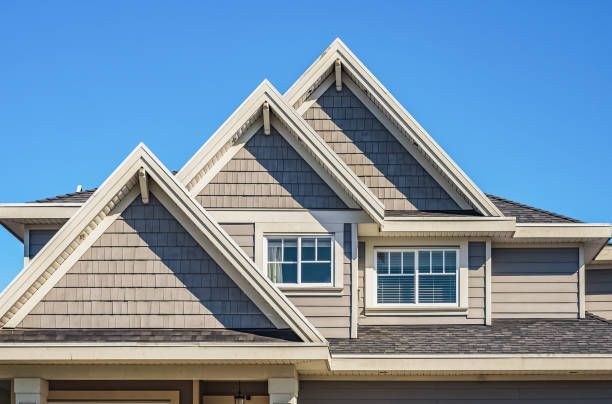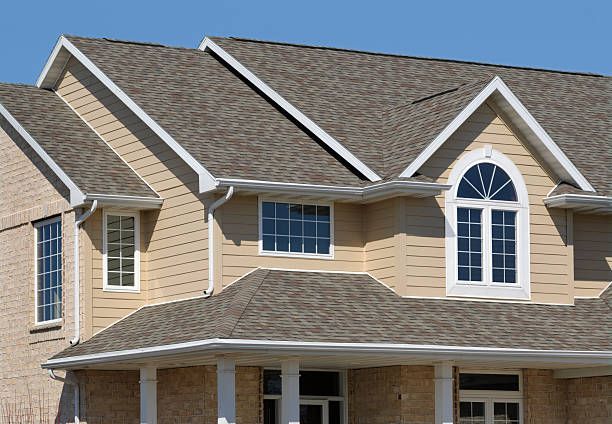How Often Should You Replace Your Roof? Key Factors to Consider
How Often Should You Replace Your Roof? Key Factors to Consider

Key Takeaways
- Roof Lifespan: The average lifespan of a roof depends on the materials used, with asphalt shingles lasting around 20-25 years, while metal and tile roofs can last 50 years or more.
- Signs of Roof Replacement: Key indicators include missing shingles, leaks, sagging, and increased energy bills due to poor insulation.
- Climate Impact: Harsh weather conditions, such as extreme heat, heavy snow, or strong winds, can shorten the lifespan of your roof.
- Maintenance Matters: Regular maintenance can extend the life of your roof, but eventually, all roofs will need replacement.
- Professional Assessment: For accurate guidance on roof replacement, it's crucial to consult with a roofing professional rather than relying on DIY evaluations.
Your roof is one of the most critical components of your home, acting as a shield against the elements. However, like all things, roofs have a lifespan, and understanding when to replace your roof is vital to maintaining the safety and value of your property. In this blog, we will explore the key factors that determine how often you should replace your roof. Whether you're dealing with minor wear and tear or significant damage, knowing the signs of when it's time to invest in a new roof can save you from costly repairs down the line. Let's dive into the details and equip you with the knowledge to make an informed decision.
Factors That Determine Roof Replacement Frequency
Material Lifespan
The type of material your roof is made of plays a significant role in determining how often it needs to be replaced. Here's a breakdown of common roofing materials and their expected lifespans:
- Asphalt Shingles: Typically last 20-25 years.
- Wood Shingles and Shakes: Can last up to 30 years with proper care.
- Metal Roofs: Known for their durability, these can last 40-70 years.
- Tile and Slate Roofs: These high-end options can last over 50 years, with slate often lasting more than 100 years.
The longevity of your roof also depends on the quality of the installation and the environment it’s exposed to. Even the most durable materials can fail prematurely if not installed correctly.
Climate and Weather Conditions
The environment your roof is exposed to plays a significant role in its lifespan. Roofs in areas with extreme weather conditions may require replacement more frequently. Here’s how different climates can affect your roof:
- Hot Climates: Prolonged exposure to heat can cause roofing materials to deteriorate faster. Asphalt shingles, for instance, can crack or warp under intense sunlight.
- Cold Climates: Freeze-thaw cycles in cold climates can lead to cracking and other damage. Heavy snow can also add weight, potentially leading to structural issues.
- Windy Areas: High winds can lift shingles or cause other damage, leading to leaks and a need for more frequent replacements.
Regular inspections after severe weather events are crucial to catch any damage early, potentially extending the life of your roof.
Roof Age and Previous Repairs
Understanding the age of your roof is essential. Even if your roof appears to be in good condition, it might be reaching the end of its lifespan if it’s been installed for a couple of decades. If your roof is over 20 years old, it’s time to start considering a replacement, especially if you've already had multiple repairs done. Repeated patching and fixing can only go so far before a complete overhaul is necessary.
Signs That Indicate Roof Replacement is Needed
Some signs are clear indicators that your roof is beyond simple repairs and requires replacement:
- Missing or Damaged Shingles: Missing shingles expose your roof to the elements, leading to leaks and further damage.
- Leaks and Water Damage: Water stains on your ceiling or walls can indicate a roof leak, which, if widespread, may mean it's time for a new roof.
- Sagging Roof: A sagging roof is often a sign of structural issues, which can be dangerous if not addressed promptly.
- Increased Energy Bills: A sudden spike in your heating or cooling bills can indicate poor roof insulation, which often accompanies an aging roof.
These signs shouldn't be ignored, as delaying replacement can lead to more significant issues, including damage to your home’s interior.
Impact of Roof Maintenance
Regular maintenance can significantly extend the life of your roof. This includes clearing debris, fixing small leaks, and replacing damaged shingles as they appear. However, maintenance is not a substitute for replacement. Eventually, even the best-maintained roof will need to be replaced as it reaches the end of its lifespan.
Consultation with a Roofing Professional
While DIY inspections can help spot obvious damage, only a professional can provide an accurate assessment of your roof's condition. A professional roofer can identify underlying issues that might not be visible to the untrained eye and can advise you on the best course of action. Attempting to replace a roof yourself can be dangerous and often leads to more problems down the line.
For those in need of expert roofing services, Delaware Roofing is your go-to provider. Conveniently located at 109 Chartwell Court, Bear, DE 19701, our team is committed to ensuring your home remains safe and secure with a durable roof. Whether you're considering a roof replacement or need a professional inspection, don't hesitate to reach out to us. Give us a call at 302-377-1193 to schedule your consultation and let us help you determine the best course of action for your roofing needs.
Conclusion
Your roof is your home’s first line of defense, and understanding when to replace it is crucial to maintaining the integrity of your property. Whether due to age, weather, or visible damage, recognizing the signs that it's time for a new roof can save you from costly repairs and potential hazards. Don't wait until a minor issue becomes a significant problem—consult with a professional roofing service like Delaware Roofing to assess your roof's condition and ensure your home remains safe and secure.
Protect your home and investment with a thorough roof inspection from Delaware Roofing. Don't wait until it's too late to replace your roof—contact us today to schedule your consultation and learn more about how often roof replacement is necessary for your property.
FAQs
Q: How often should a roof be inspected?
A: It's recommended to have your roof inspected at least once a year and after major storms to catch any potential issues early.
Q: Can I replace my roof in sections?
A: While it’s possible to replace only damaged sections, this can lead to an uneven appearance and potential issues with warranties. Full replacement is often more cost-effective in the long run.
Q: What time of year is best for roof replacement?
A: Spring and early summer are ideal for roof replacement due to mild weather conditions, but it can be done any time of year depending on your location.
Q: What is the average cost of roof replacement?
A: The cost varies depending on the material, size, and complexity of the roof, but it generally ranges from $5,000 to $15,000.
Q: How can I tell if my roof needs replacement or just repairs?
A: If your roof is near the end of its expected lifespan, has widespread damage, or has been repaired multiple times, replacement is likely the best option. A professional inspection can provide clarity.



